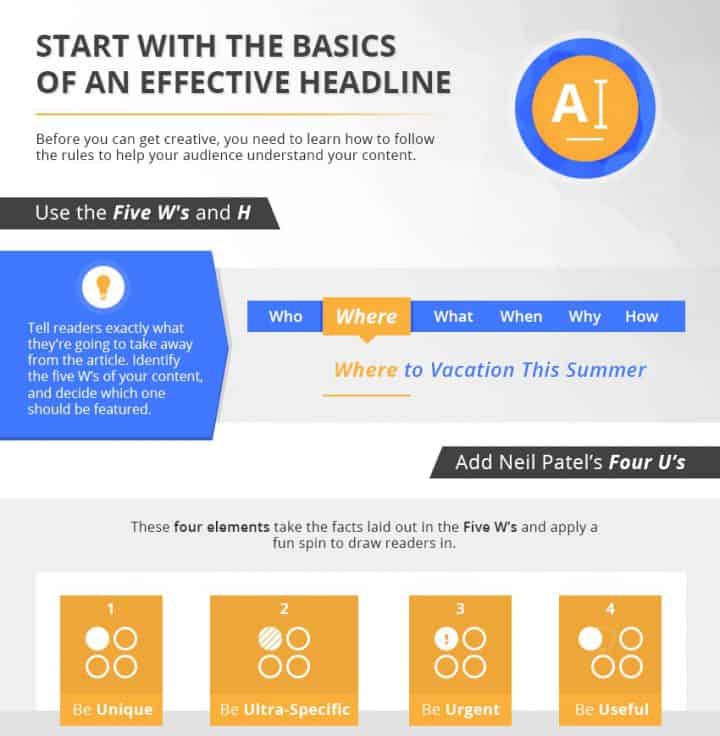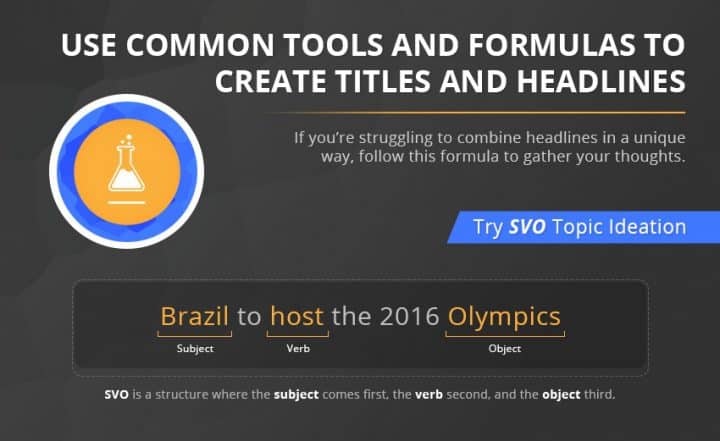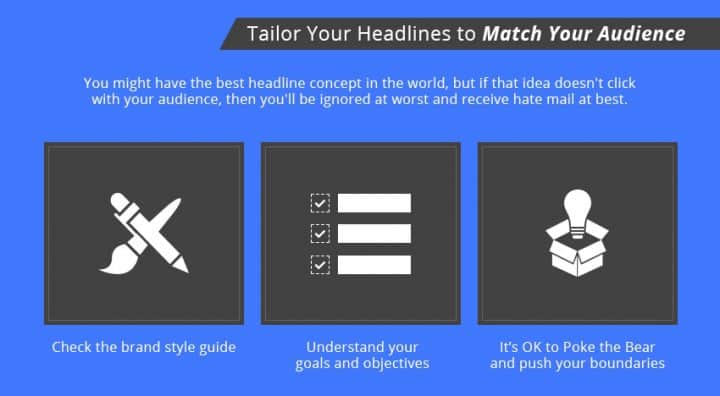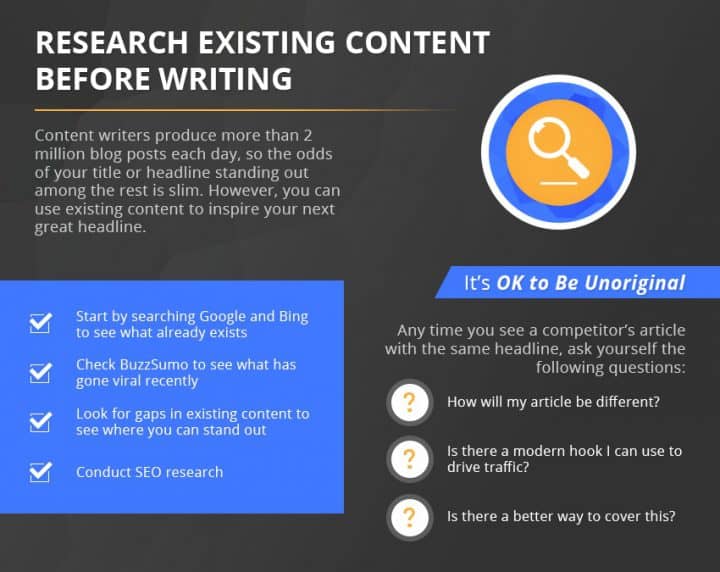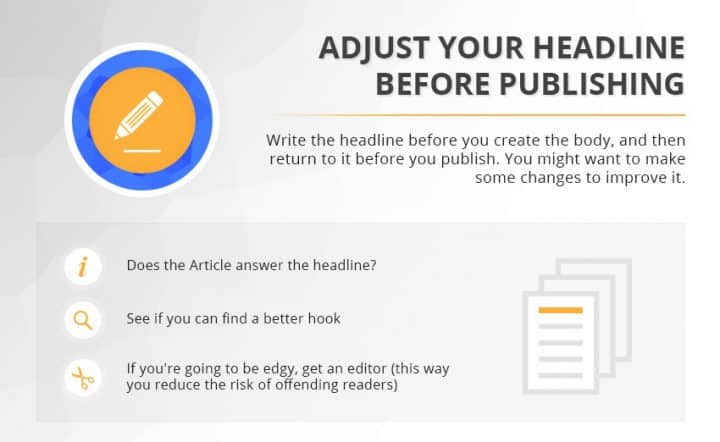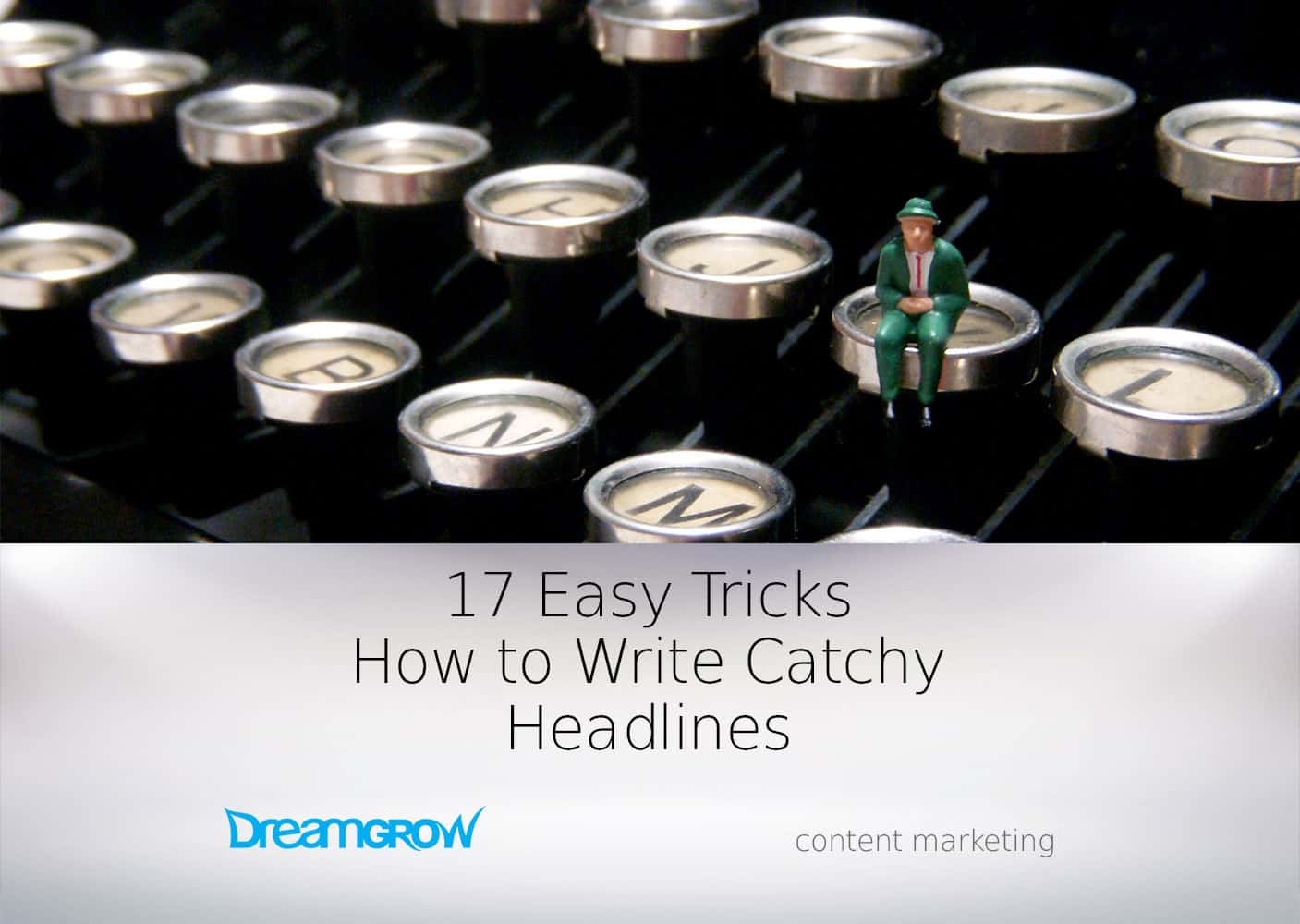Get more people to click on your shares and look at your content.
Great headlines are 80% of your content success. If your headline doesn't make them click, your content has failed. For example be ultra-specific and avoid general fluff.
Writing catchy titles and headlines is one of the best ways to increase engagement on your content. Catchy titles are the first thing your audience sees and can dictate if they decide to stay on your page. So, one of the best content marketing hacks to boost engagement, is to improve your headlines and titles. The Copypress infographic outlines some essential tips for improving your headline and title writing skills.
You may know the expression TL;DR or too long didn’t read. TL;DR means that often people share and comment on your content based solely on the headline.
Start with the Basics
At the core of headline writing is a simple principle: follow the Five W's and H: who, where, what, when, why, and how. Five W's will help frame the audience's expectation.
Create a checklist of these principles and use it every time you are writing headlines for your content. You don’t have to match all the principles, but make sure you target some of them. Let’s take this article as an example: How to Create Catchy Titles and Headlines [infographic]
- Who – I could add “marketers” into the headline
- Where – Not relevant in this context, but I could add for “blog posts” or “Facebook updates”
- What – “Catchy Titles and Headlines”
- When – You can often add “now” to your headline to convey the urgency
- Why – In this case, I could add “to boost engagement” to the title
- How – “How to” at the beginning takes care of that.
You can also use the four U's which emphasizes being
- unique,
- ultra-specific,
- urgent, and
- useful.
When applied to the headline writing, these basic principles can vastly improve your audience's engagement.
Tools and Formulas to Write Catchy Titles
There are several online tools and strategies for headline writing. One of the easiest is the SVO or Subject Verb Object topic creation. It's a formula that emphasizes actionable headline writing, which is a great way to increase click-throughs on your titles. CoSchedule also has a great headline analyzer tool to help assess your headlines.
Use Distinctive Hooks
The ‘hook' is what draws your reader in and entices the action of clicking your article. It's important to devote ample time to finding the best hook to elicit more audience engagement. You can find distinctive hooks by looking at what worked in the past. Review your old articles to see what content generated the most engagement and why. You can use trend-jacking to tie your content to a current event. Lastly, don't be afraid to exaggerate or use hyperbole, just be careful not to create a huge disconnect between expectations and reality.
Tailor Headlines to Match Your Audience
Another critical step in headline writing is to make sure you understand and are speaking to the proper audience. If your headlines and titles are not resonating with your target market, then you need to take a step back and find where the disconnect is occurring. Conduct market research, look at your competition and review your analytics. Understanding your audience and their interests are one of the best ways to improve your headlines.
Use the tone and style that matches your audience. Make sure you include the words that your audience is familiar with. Replace complex words with simpler ones.
Research Existing Content
All your headlines don't need to be unique. In fact, some of the most successful headlines are generic and straightforward. The reason is, simple headlines can be effective, especially from a search perspective, because they match the audiences query. It's a good idea to research previously written articles on your topic to see which headlines rank at the top of Google search results. These headlines are usually a great place to start. Naturally, you can add your elements or twists to the headline, but if you have writer's block, use other headlines to inspire you.
For SEO reasons you need to add your keywords to the headline. Specific keywords may limit your artistic freedom, but for now, it’s necessary if you want to rank in Google search results.
Adjust Your Headline Before Publishing
It's usually a good idea to create a list of different headlines before you start writing your article. However, these should not be the last time you look at the headline. In fact, the content will often dictate the headline and not the other way around. It's important that you always return to the headline before publishing to make sure your content matches your headline, to explore better hooks, and to make any final revisions to the headline.
Creating Catchy Titles and Headlines Full Infographic
To get even more specific check out:
17 Easy Tricks How to Write Catchy Headlines
___________________
Photo via Visualhunt.com

